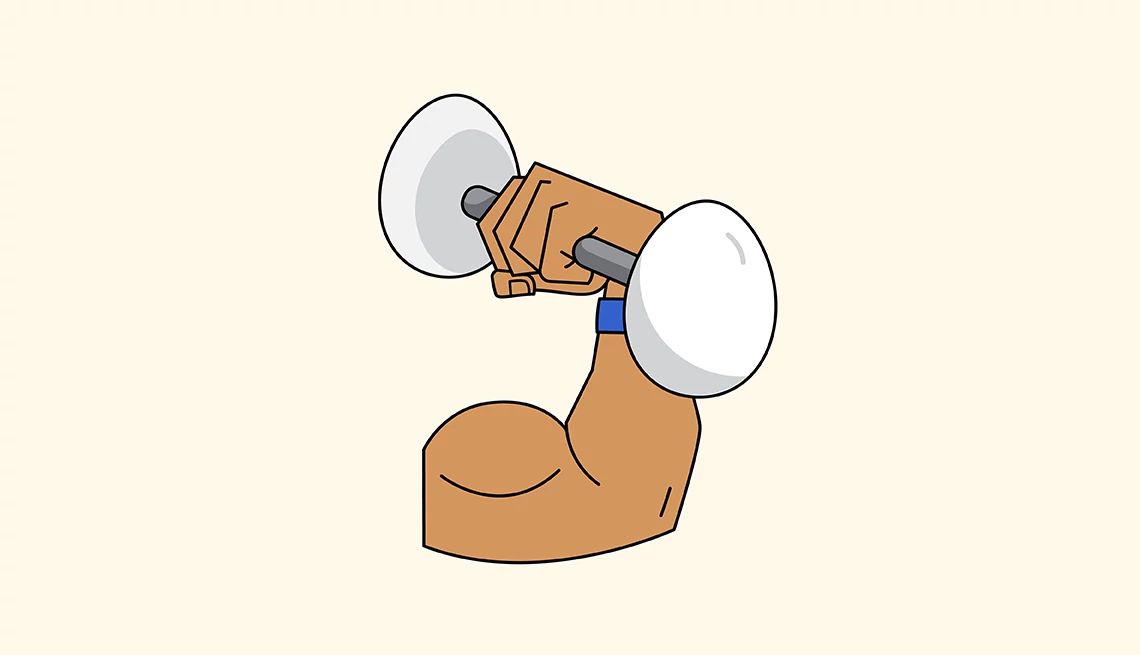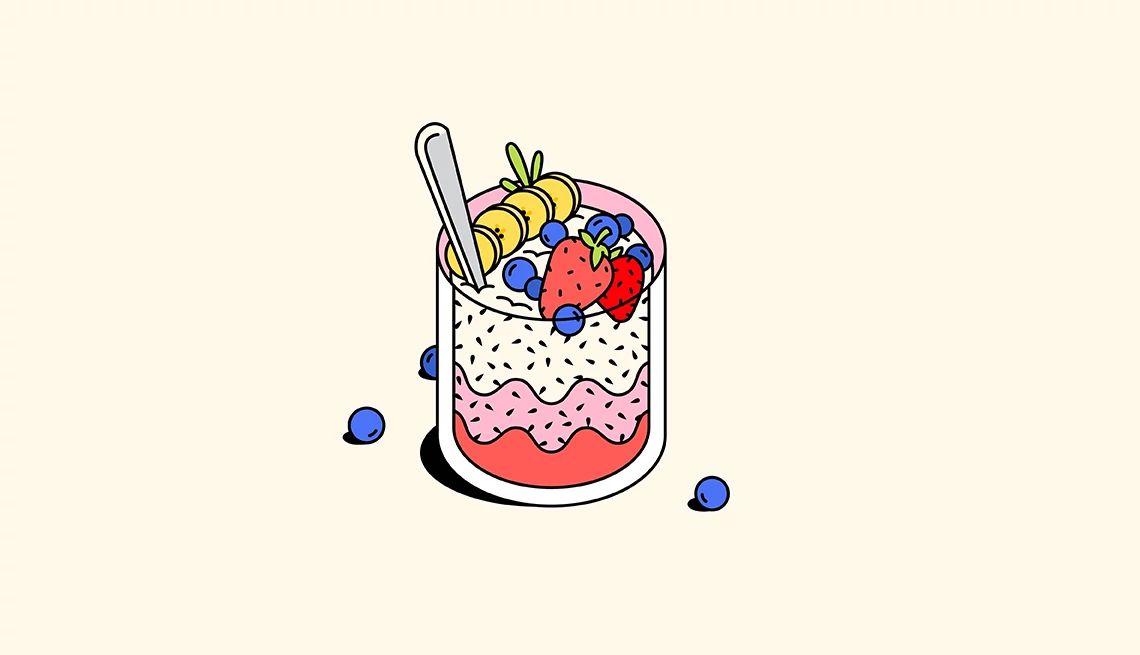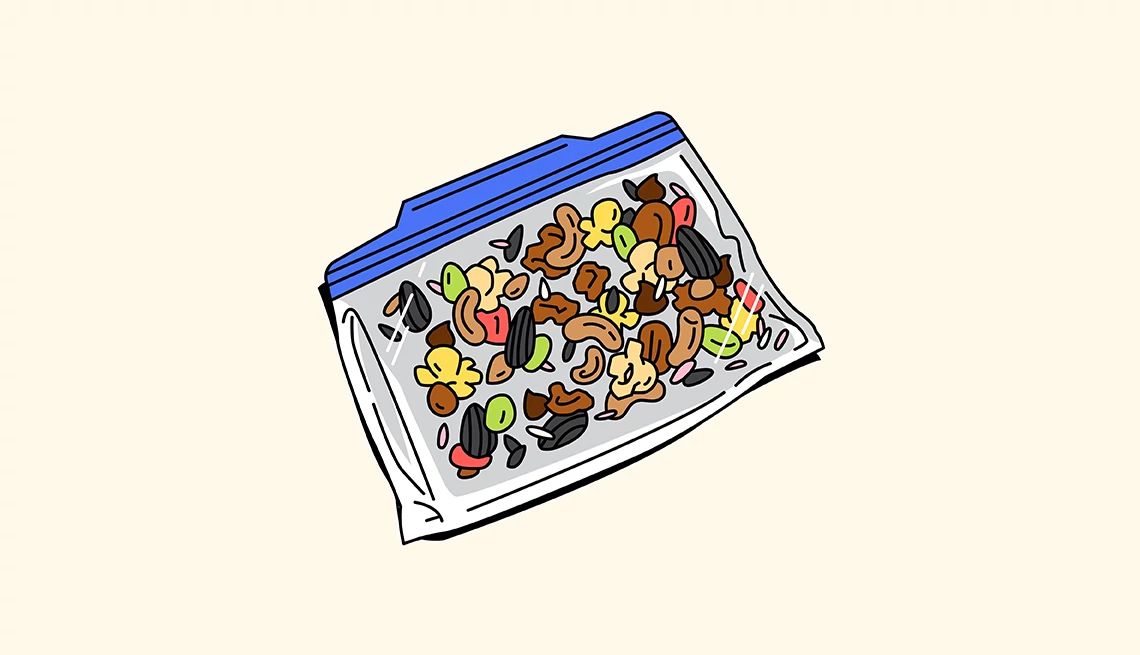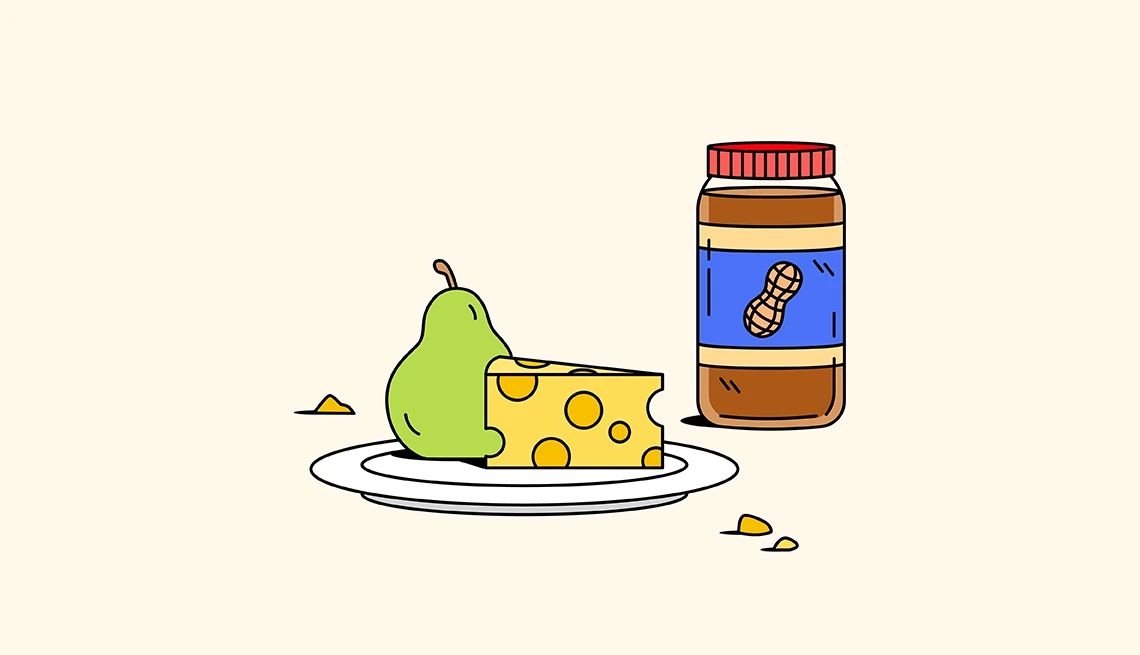AARP Hearing Center


Snacking used to be simple: maybe a slice of cheese or an apple with peanut butter. These days, though, Americans are more likely to reach for packaged chips, crackers or cookies between meals. These ultraprocessed foods are designed to be addictive, making it easy to overeat. One in eight adults ages 50 to 80 shows signs of addiction to ultraprocessed foods, according to research conducted by the University of Michigan and sponsored by AARP.
In fact, nearly a quarter of our daily calories — and a third of our added sugar — now come from snacks, according to a 2023 study of more than 20,000 Americans.
As we age, it becomes more important to make those bites between meals count, says Alison Kane, a registered dietitian and wellness program manager at Massachusetts General Hospital in Boston.
“Snacking can sometimes get a bad rap in terms of weight gain or excess calories or empty calories,” Kane says. “I think there’s something to be said about intentional snacking. … It’s a really good opportunity to sneak in more of those nutrient-dense foods.”
Alice Lichtenstein, a senior scientist at Tufts University’s Jean Mayer USDA Human Nutrition Research Center on Aging, recommends evaluating your overall diet for what’s missing, and using snacks to fill in the holes.
What you snack on can make or break your health. A 2023 study in the European Journal of Nutrition found that regularly reaching for processed snacks like cookies and chips is linked to more dangerous visceral fat around your organs, a higher body mass index (BMI) and elevated triglycerides, all of which raise your risk for heart disease. The study authors also noted that "frequent, high-quality" snacks were linked to a healthy BMI compared to those who didn’t snack at all or ate unhealthy snacks. With a little intention, you can choose snacks that stabilize your blood sugar, keep your energy up and leave you feeling satisfied. Whether you’re looking for something salty or sweet, a packaged snack or a homemade treat, here are 25 surprisingly healthy snack ideas to get you started.
1. Pistachios (and other nuts)
Getting enough protein is important as we get older to prevent age-related muscle mass loss, and nuts are one of the easiest — and tastiest — ways to boost our intake, says Christine Rosenbloom, registered dietitian, professor emerita at Georgia State University and coauthor of Food & Fitness Over 50. Nuts also offer fiber, healthy fats and other nutrients, like magnesium. Large studies have found that people who eat five or more ounces of nuts per week have a 35 to 50 percent lower risk of heart disease and death. While all nuts are good choices, Rosenbloom is a fan of pistachios, because they are one of the few plant-based complete proteins with all nine amino acids your body needs, and 6 grams of protein per 1-ounce serving (about 49 kernels). Shelled varieties come in tasty flavors like salt and vinegar and chili-roasted; Rosenbloom likes the regular shelled variety, because cracking them open slows you down and helps you snack more mindfully.
2. Whipped cottage cheese
Cottage cheese is budget-friendly and high in protein and calcium, says Joan Salge Blake, a nutrition professor at Boston University and host of the nutrition and health podcast Spot On!. It also contains plenty of leucine, an amino acid that helps us maintain muscle as we age, she says. Not a fan of the curds? Salge Blake has a solution: “Whip that baby in the blender, and it will come out really creamy — it’s going to change everything.” Then add some fruit for a sweet snack, or mix in herbs and spices for a savory veggie dip. Salge Blake’s favorite variation mixes in rum extract, canned pineapple and shredded coconut for a dessert that will remind you of a piña colada.
3. Edamame pods with seasoning
Edamame, or tender young soybeans, aren’t just rich in protein; they are also rich in fiber, leucine, iron and calcium. Studies show that eating more soy can lower blood pressure, reduce the risk of type 2 diabetes and help postmenopausal women with hot flashes and bone density. If you pick up some frozen edamame in the pod, “you just thaw it out and it’s ready to eat,” Salge Blake says. Like them warm? Drop the frozen pods in boiling water for three to five minutes. Edamame have a satisfying crunch, and it’s fun to pop them out of their pods right into your mouth. For extra flavor, dust on a bold seasoning blend; Salge Blake suggests an Asian-inspired one with garlic, sesame and a touch of chili.
4. Dry-roasted edamame
Dry-roasted edamame, sold as a packaged snack at some grocery stores and online, offers the benefits of fresh edamame in a crunchy, grab-and-go form. Bethany Doerfler, a clinical research dietitian at the Northwestern Medicine Digestive Health Institute, recommends the Seapoint Farms brand for its simple ingredients list: just soybeans and sea salt. Because the edamame are dry-roasted without oil, each serving contains only 4 or 5 grams of fat. A third of a cup delivers 14 grams of protein and 8 grams of fiber, making it a satisfying snack. Flavors include lightly salted, spicy wasabi and black edamame.


5. Hard-boiled eggs
Historically, eggs have gotten a bad rap for their cholesterol, but newer research shows they don’t necessarily increase the risk of heart disease. Not only do hard-boiled eggs contain 6 to 7 grams of high-quality protein each, but they’re also one of the best sources of choline, an important nutrient that supports brain health. In fact, a 2024 study in the Journal of Nutrition found that older adults who ate eggs frequently were less likely to develop Alzheimer’s disease. Keep a few hard-boiled eggs in the fridge for a quick, protein-rich snack “that will keep you going for hours,” says Mia Rigden, a Los Angeles–based board-certified nutritionist, chef and author of the Substack newsletter Btwn Meals. For a flavor boost, Rigden suggests sprinkling them with lemon pepper, everything-bagel seasoning or your favorite spice blend.
6. Flavored tuna fish pouch
The American Heart Association recommends two servings of fish each week, but it can be tough to cook fish at home. That’s where those handy flavored tuna and salmon pouches come in, says Salge Blake. Each tuna pack contains 16 to 19 grams of protein, plus omega-3 fatty acids, which can protect memory and lower the risk of heart disease. With more than 15 flavors, from lemon pepper to bacon ranch, it’s easy to find one you like. “I think it’s really good,” says Salge Blake, who eats it right out of the pouch with a fork.
7. Greek yogurt parfait
This classic combo features two superfoods: yogurt and berries. Greek and Icelandic yogurt “gives you a nice boost of protein,” Kane says, “and then the berries give us nice fiber, antioxidants and a little bit of carbohydrates to give us a little boost of energy.” The yogurt also supplies bone-building calcium and probiotics to support your immune system, while berries (especially those rich in anthocyanins, like blueberries) are linked to a lower risk of heart disease, type 2 diabetes and death from all causes — plus they’re known for helping to keep the brain healthy. Opt for plain yogurt or one with no sugar, Kane says; she likes Oikos Triple Zero. Top off your parfait with some walnuts for a heart-healthy crunch.





































































You Might Also Like
5 Festive No-Bake Summer Desserts
Keep cool — and the oven off — with these picnic-friendly showstoppers
How to Shop Smarter at the Grocery Store
42 ways to maximize your next trip to the supermarket
Our Allergies Quiz Is Nothing to Sneeze At
Read our Smart Guide to Seasonal Allergies, then test your knowledge